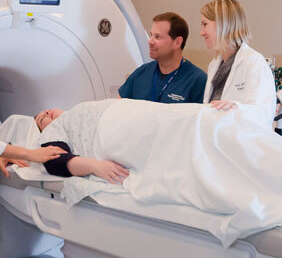Orbital apex syndrome is a condition in which the cranial and optic nerves are involved and they do not work properly. This condition can affect the vision of the individuals and can lead to visual loss. This disease also affects the region of the superior orbital fissure as well as the optic canal and leads to ophthalmoplegia.
The orbital apex is the point where the orbit connects with the skull at the craniofacial junction. This is where nerves and blood vessels leave the intracranial compartment and enter the orbit through several bone holes. The extraocular muscles also originate through the orbital apex. The inclusion of ocular motor nerves in the anatomical zone of the orbital apex causes ophthalmoplegia and visual loss which leads to orbital apex syndrome.
Patients with orbital apex syndrome mostly complain about hypoesthesia of the forehead and afferent pupillary deficit. These symptoms result due to the involvement of the optic and cranial nerves simultaneously. The only difference between the orbital apex diseases such as OPS, CSS (Cavernous sinus syndrome), and SOFS (Superior orbital fissure syndrome) is the involvement of the optic nerve. Due to this, orbital apex syndrome is considered different from the other two diseases. Thus, this feature of orbital apex syndrome is considered a distinguishing characteristic. The diagnosis of the disease becomes easy due to this feature of the orbital apex syndrome.
Orbital Apex Syndrome Symptoms
The patients with orbital apex syndrome mostly have the following symptoms:
- Vision loss.
- Decreased corneal sensation.
- Ptosis.
- Ophthalmoplegia.
- Relative Afferent Pupillary Defect.
- Choroidal folds.
- Chemosis.
- Absence of corneal reflexes.
- Facial pain due to cranial nerve interference.
- Proptosis.
From the above-mentioned symptoms, the loss of vision is the most common complaint of patients with orbital apex syndrome.
The involvement of the optic nerve is responsible for the afferent pupillary deficit. As the disease progresses the mild orbital congestion and adnexal edema become more destructive.
The other symptoms include the pain around the orbit or on the skin around the orbit. This manifestation is due to the involvement of the maxillary tier of the trigeminal nerve. The symptom of ophthalmoplegia exists within the patient due to the involvement of trochlear, oculomotor, and abducens nerves with differing compositions.
Orbital Apex Syndrome Causes
Orbital Apex Syndrome is caused by various infections, inflammations, and tumors and the severity differs according to the origin of the disease. The certain infectious causes are as follows:
- The orbital apex syndrome can result from bacterial orbital cellulitis, viral infections, and fungal sinusitis.
- The virus which is mostly responsible for the disease is Herpes Zoster.
- Similarly, certain bacteria like anaerobes, mycobacterium tuberculosis, gram-negative bacilli, streptococcus, actinomyces, and staphylococcus are responsible for affecting the orbital apex region.
- The fungal infections that result in orbital apex syndrome are due to Mucormycosis or aspergillosis fungus.
The inflammatory causes of the orbital apex syndrome include the following conditions:
- IgG4-related orbital myositis.
- Orbital inflammatory pseudotumor.
- Thyroid orbitopathy.
- Giant cell arteritis.
- Tolosa Hunt Syndrome.
- Sarcoidosis.
- Churg-Strauss syndrome.
- Granulomatosis.
The tumors which are responsible for orbital apex syndrome include; tumors of the neck and head, traumatic/iatrogenic, hematologic, neural, or metastatic lesions, and orbital apex fracture.
Orbital Apex Syndrome Diagnosis
The imaging of the orbit is used to determine the diagnosis of orbital apex syndrome. The MRI (magnetic resonance imaging) is utilized to scan the orbits to examine for enlargement or enhancement of extraocular muscles and orbital structures, or an orbital CT scan, which is likely a more widely available second-line alternative is used for the diagnosis.
Orbital Apex Syndrome Treatment
Many inflammatory causes necessitate the use of systemic immunomodulatory drugs such as corticosteroids and steroid-sparing medicines to treat the main disease and reduce inflammation. The inflammations can also be treated through radiation therapy and thyroid orbitopathy can be treated with decompressive surgery to enable anatomic enlargement of the orbit.
The proper broad-spectrum antimicrobial therapy is usually administered as part of the treatment for the infectious causes of the disease. Ophthalmic or endoscopic intervention may be required in the case of an orbital or subperiosteal abscess, depending on the severity of the infection.
The traumatic and neuroplastic causes of the orbital apex syndrome can be treated through the following methods:
- Chemotherapy.
- Surgical resection.
- Radiation therapy.
- Decompressive surgery corticosteroids.
 Health & Care Information
Health & Care Information 


